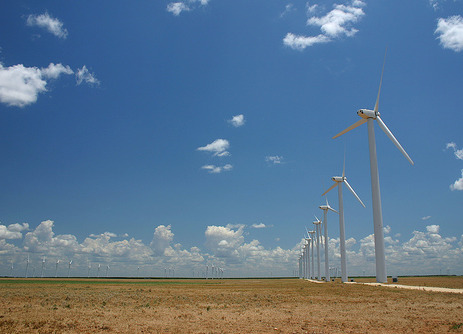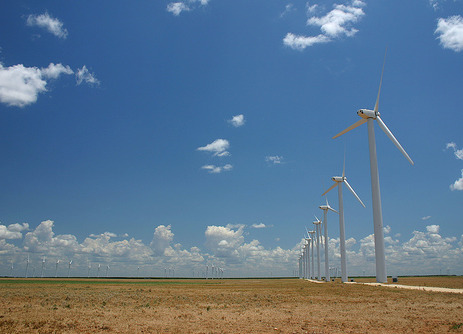 A wind farm near Fluvanna, Texas. Also known as part of the Southern United States.Photo courtesy fieldsbh via FlickrBarring something unexpected, Democrats are expected to move to cloture on the Senate energy bill on Monday, for a vote on Wednesday.
A wind farm near Fluvanna, Texas. Also known as part of the Southern United States.Photo courtesy fieldsbh via FlickrBarring something unexpected, Democrats are expected to move to cloture on the Senate energy bill on Monday, for a vote on Wednesday.
A last-minute campaign is upping the pressure to restore the renewable electricity standard (RES) to the bill. It’s too late to get it in the main bill, so proponents have turned to pushing for an amendment. As I mentioned here, Reid doesn’t want to open the bill to amendments at all — it will eat up the precious remaining time in the session.
However, Republicans are (surprise!) taking a hard line, saying they will oppose the bill as a bloc unless it’s opened for amendments. If they can hold their 41 together, that alone dooms the bill (thanks to filibuster abuse). Plus, Sen. Mark Begich (D-Alaska) says he’ll vote with Republicans unless he gets an amendment altering the unlimited liability cap. Mary Landrieu (D-La.) may follow him.
So the bill may be dead unless it’s opened to amendments. Of course, if it is opened to amendments, it could be dead too — Republicans could offer a bunch of fake “message” amendments and run out the clock. So it’s a tricky situation. Hard to see a way through.
If there are amendments, there damn well better be one restoring an RES. A week back, former Senate majority leaders Bob Dole (Kan.) and Tom Daschle (N.D.) penned an op-ed in Politico arguing for one. Recently Sens. Sam Brownback (R-Kan.) and Byron Dorgan (D-N.D.) came out behind it. Colorado Gov. Bill Ritter (D) is out behind it. Dorgan says he sees 60 votes; Sen. Mark Udall (D-Colo.) says he sees 62.
Now, notice something about the bipartisan list of names mentioned above. North Dakota, South Dakota, Kansas, Colorado — these are big wind states. And it’s the American Wind Energy Association that’s driving quite a bit of this; Dole’s firm represents wind companies, Daschle advises them. It’s basically a Midwestern wind energy push.
Missing in action: the South. This has always been the politics of an RES: Southern lawmakers don’t believe they have access to renewables and they think they’ll just end up transferring money to other parts of the country. Their rates will rise more. They’ll get screwed.
This is substantively false. The South does have access to renewables and it will benefit from an RES.
The latest proof comes in the form of a working research paper out of Duke and Georgia Tech: “Renewable Energy in the South,” an “up-to-date assessment of the economic potential for expanding renewable electricity generation in the South.” The authors find that the South can get 20 to 30 percent of its power from renewable sources within 20 years (up from 4 percent today), primarily through hydro, wind, and biomass. This could be achieved at costs the authors characterize as “modest.” In fact, Southern states along the Eastern seaboard would see electricity prices fall slightly.
The south has a heavy, coal-dependent industrial base; it consumes 44 percent of the nation’s total energy with 36 percent of its population. It gets just 3.7 percent of its power from renewables today. Here’s where that paltry bit comes from:
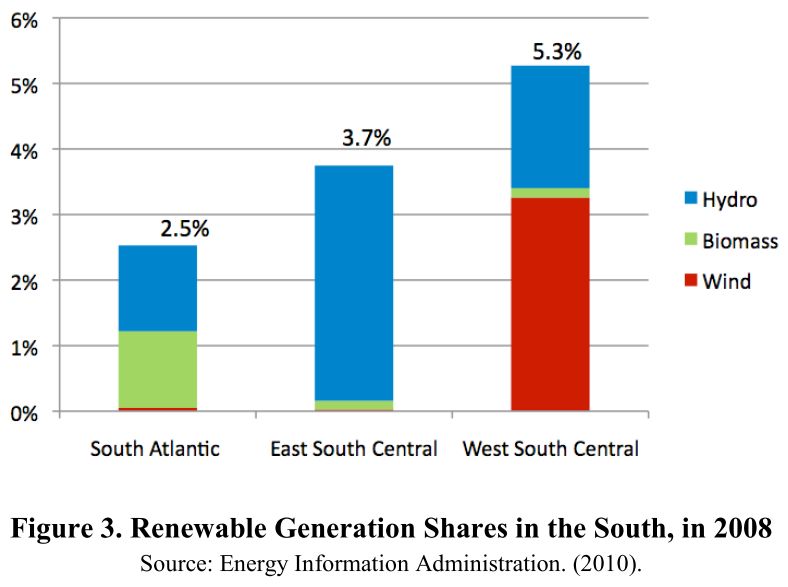
The researchers modeled three scenarios: expanded renewables (ER) via R&D and tax credits alone; ER plus a renewable electricity standard; and ER + a price on carbon. Here’s where the South could get in terms of utility-scale renewables under those scenarios:
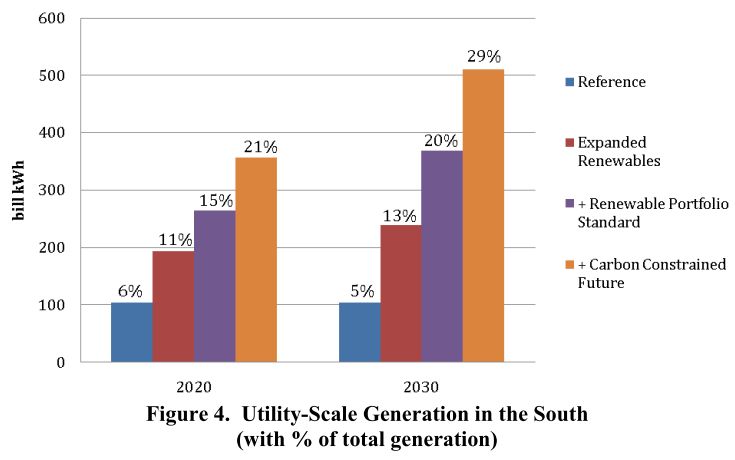
That’s pretty impressive growth, but here’s where things get interesting. What if you add in consumer-owned renewables? This includes solar, of course, but the big play for consumer-owned renewables in the South is combined heat and power (CHP), or as our resident expert calls it, recycled energy. “By 2030,” the study says, “CHP may displace as much as 288 TWh of electricity generation in the South.” That’s huge! Here’s where you can get by 2030, comparing consumer-owned and utility-scale:
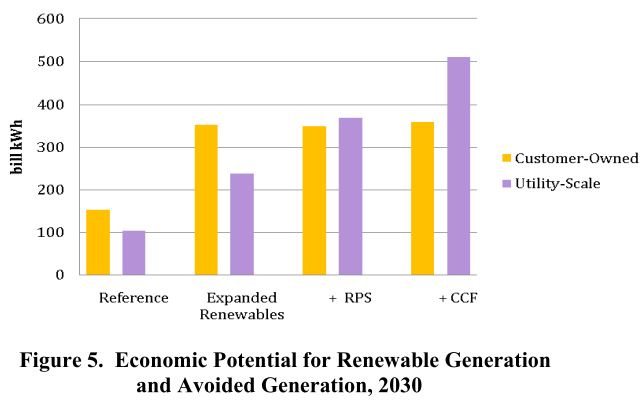
Now, that’s with an RES and a carbon price. Without the carbon price, you only get about half as much consumer-owned and about 65 percent as much utility-scale. Also you get far less carbon-pollution reduction: “renewable sources could be expected to help reduce emissions from electricity generation in the South in 2030 between 7 percent (in the Expanded Renewables Scenario) and 55 percent (in the +Carbon Constrained Future Scenario).”
Sure would be nice to have that carbon price!
But the point remains:
Under realistic renewable expansion and policy scenarios, the [South] could economically supply a large proportion of its future electricity needs from both utility-scale and customer-owned renewable energy sources. Additional renewable potential is likely to materialize over the next several decades, when solar becomes more cost-competitive, intermittent transmission barriers are overcome, and emerging technologies mature. [Emphasis mine.]
This journey to sustainable power is not going to pass the South by. It can participate in these new markets and join in this national goal. It has nothing to fear.
If any Southern senator wants to play a role other than obstructionist in the energy debate, now is the time. The data are clear: An RES can work in the South too. It’s time for a senator from that region to stand up and join the push to salvage clean energy policy.
